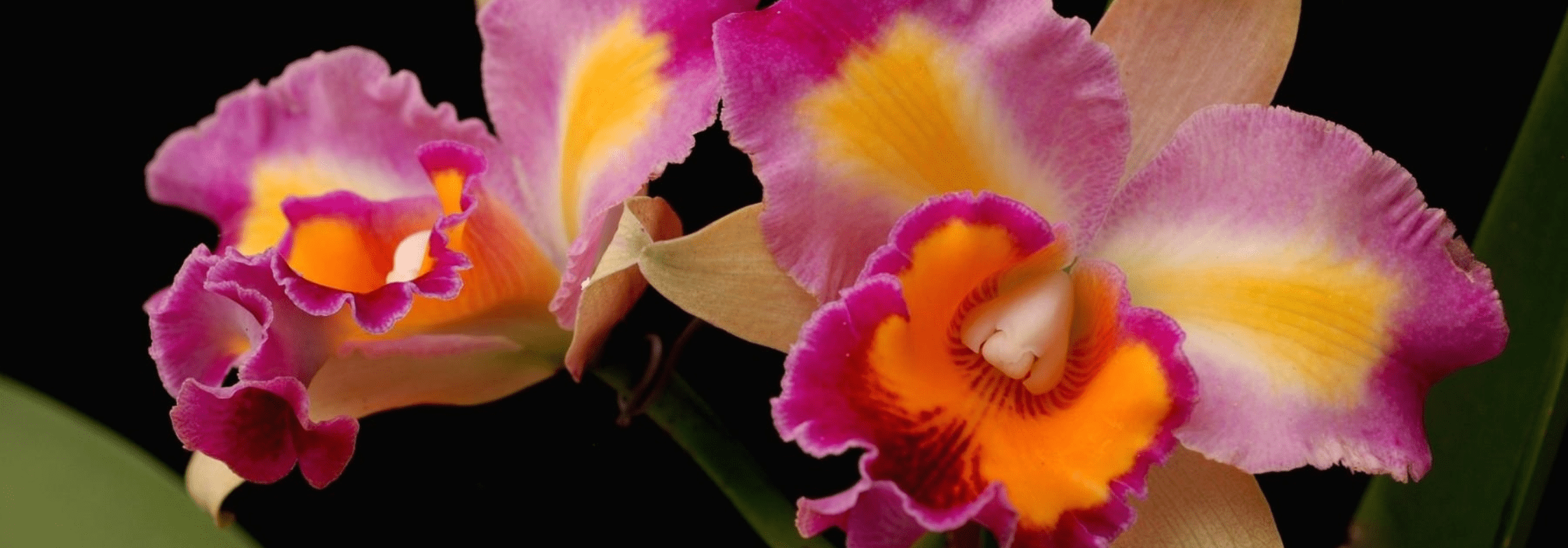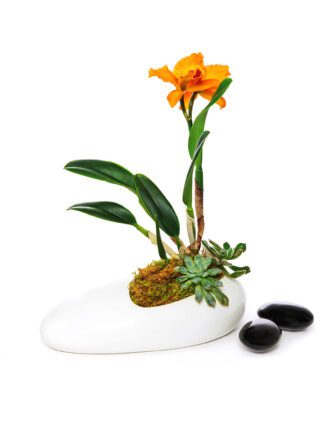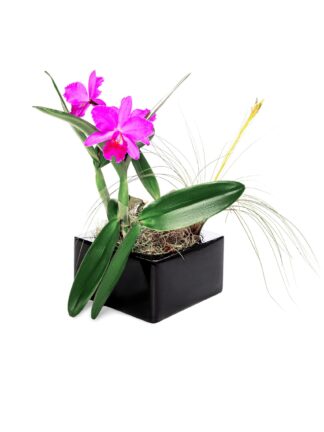
In this article, we will tell you how to care for the Cattleya orchid.
The Cattleya has gained fame as the queen among orchids. This species was discovered in the northern part of Brazil. It then came to the English collector William Cattleya, after whom it was named. In 1818, one of the plants in Cattley’s greenhouse bloomed, striking everyone with its unprecedented beauty and unusual flower shape.
According to some sources, there are more than 180 species of the genus Cattleya in nature.
Cattleya in the wild
Cattleya are found in the rainforests of Central and South America, and there are especially many growing in the Amazon River Delta. Like most tropical orchids, Cattleya orchids are epiphytes, meaning they grow not on the ground but on tree trunks and branches. This unusual way of existence allows the little plant to rise closer to the sunlight in the dense vegetation of the rainforest.
Care at home
Substrate
Substrate for Cattleya can consist of one or more components – pieces of pine bark or oak bark, coconut fiber, roots of osmunda fern, pieces of Styrofoam, sphagnum moss, vermiculite and charcoal. When you buy an orchid, it is best to leave it in the pot it is in. Repotting will only be necessary when that pot becomes cramped for it.
Watering
Orchids are watered with slightly warm water under a faucet or shower, the second option is to immerse the pot in a container of water for a few minutes. The latter method is the most optimal. The pot is immersed in water, carefully holding the surface of the substrate with your hands, so that its individual pieces do not float up. For 3-5 minutes the entire volume of the substrate will be well soaked, and the roots will be saturated with moisture and become light green. The water temperature for watering should be about 71,6-75,2°F.
Do not allow water to get on the flowers – they deteriorate and wither quickly because of this. On the new sprouts also can not pour water. If water does get, gently blot them with a paper napkin.
During active growth and flowering, water the Cattleya after 2-3 days after the substrate from the previous watering has dried completely. During the resting period the plant should be watered in 7-12 days after drying of the substrate, depending on the time of year, temperature and lighting: in the warm season at high temperature and bright light, watering is required more often.
Feeding
During the growth of the Cattleya is fertilized 1-2 times a month with special fertilizers for orchids. You can also use the usual complex fertilizers without calcium. Before making the fertilizer diluted according to the instructions, the plant must be watered, so as not to burn the roots.
Air humidity
Orchids feel very well when the air humidity is high. To increase the humidity around the plant, place the pot with the orchid on a deep tray filled with fine expanded clay or pebbles. Pour water into the tray about 0.5 cm below the top layer of pebbles so that the pot is standing on dry expanded clay, not in a puddle of water. Top up the water in the tray as it dries out.
Lighting
Sunshine and bright light are essential for Cattleya orchid to bloom. Choose a spot for the Cattleya on the sunniest windowsill. Under the bright and hot summer sun, the pot with the substrate dries out quickly, and moisture evaporates quickly from the surface of the plant. Therefore, under such conditions, the Cattleya needs frequent, sometimes even daily watering.
In winter the Cattleya need artificial extra light with a daylight lamp or a special phytolamp. The lamp is placed 30-40 cm above the orchid and turned on every morning for 8-10 hours.
Summer temperature differences
For summer stimulation of flowering, the difference between daytime and nighttime temperatures should be about 44,6°F. When keeping Cattleya on a balcony, the temperature difference is achieved naturally. If there is no possibility to put the plant on a balcony, heating in direct sunlight during the day and cooling at an open window at night will give the necessary temperature difference when kept on a window sill.
Winter maintenance
During the winter dormancy period, Cattleya should be kept cold with infrequent watering. Place the plant as close to the window as possible – this will provide the necessary cooling. Make sure the Cattleya is not above a radiator, otherwise the plant will suffer from heat and dry air. Remove the orchids from the window sill during winter ventilation.
The roots of the cattleya are very delicate and delicate, so frequent repotting can cause irreparable damage to the plant. Even after minor damage to the root shoots, the flower will take a long time to recover and bloom poorly. Serious damage to the roots often causes the death of the plant. Experienced florists recommend transplanting a cattleya orchid no more often than once every three years.
Transplanting
Transplanting a Cattleya should be done in such cases:
- The root shoots of the plant have begun to rot.
- Leaves turn yellow and fall off.
- The pot is too tight for further development of the flower.
- The plant is infested with parasites, the process of combating which involves transplanting to a new pot.
It is recommended to transplant the Cattleya orchid by the method of transplanting. In the process of transplanting, it is necessary to wash the root system of the flower under running water and remove all damaged offshoots. You can speed up the recovery of the roots by treating with a stimulating solution.
The new pot in diameter should be only a few centimeters larger than the previous one. It is necessary to take care of a quality drainage layer, which can consist of expanded clay or clay crocks.
Pruning
It is necessary to regularly remove damaged leaves, as well as root shoots. Even a less experienced florist can easily cope with this. As for the flower stalk, its trimming requires special knowledge and skills, and its features depend largely on the variety of the plant.
To trim the flower stems correctly, wait until the flowers have wilted and then look for the old buds that are not blooming and remove them. It is important not to damage the leaves and the pseudobulb during the pruning process, as this can lead to unpleasant consequences.
Now you are familiar with Cattleya orchid and know how to properly care for it. All you have to do is order a beautiful and unique orchid arrangement from the Viva Orchids of Boca Raton website, and you’ll be in luck! Choose and buy one for yourself or as a gift for a loved one. Believe us, this gift will cause a storm of happy emotions, it says it all for you.

